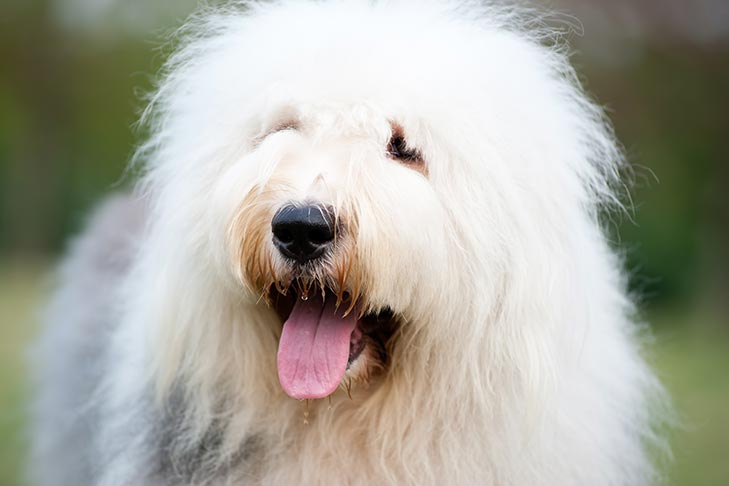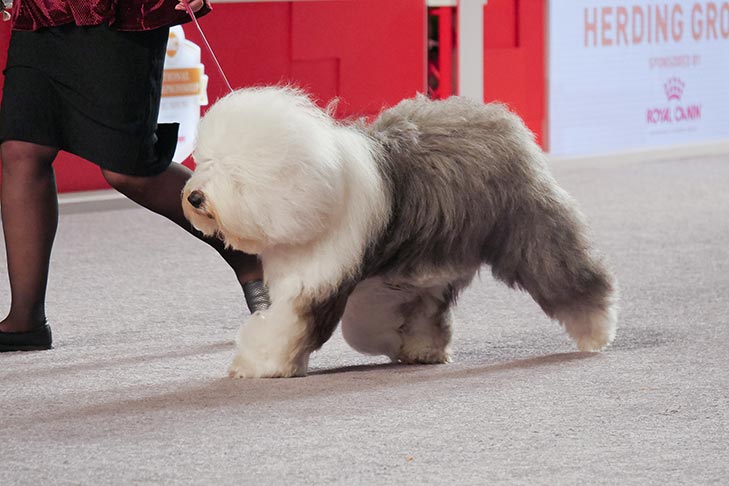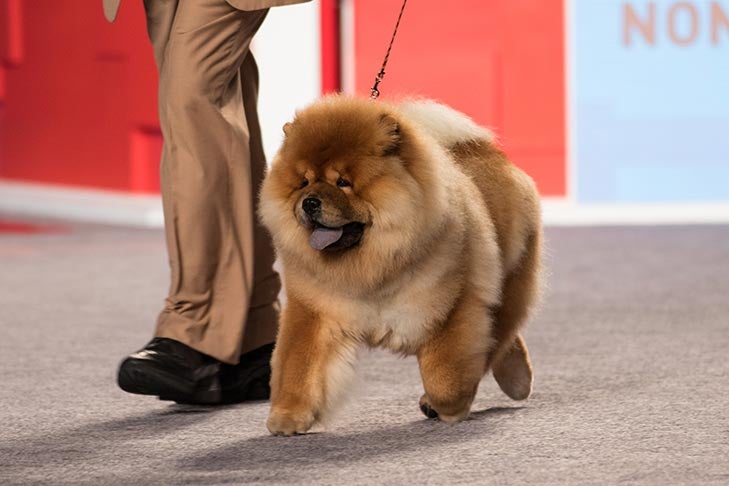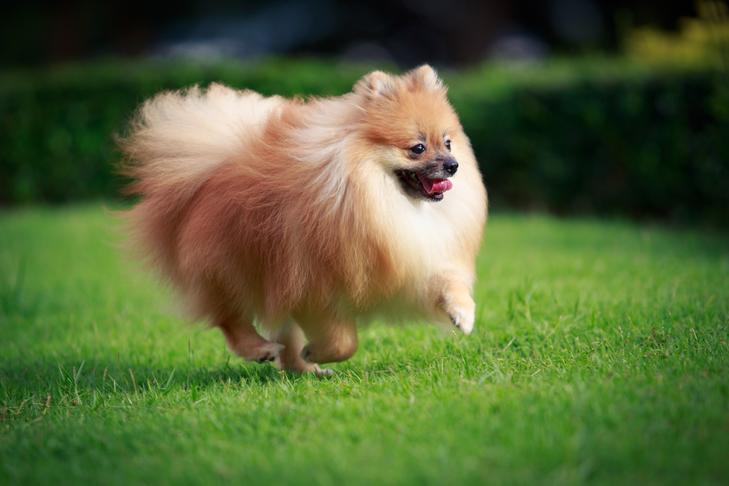
- siberian husky
- samoyed
- pomeranian
- old english sheepdog
- keeshond
- grooming
- standard poodle
- collie
- bichon frise
- american eskimo dog
- chow chow
AKC is a participant in affiliate advertising programs designed to provide a means for sites to earn advertising fees by advertising and linking to akc.org. If you purchase a product through this article, we may receive a portion of the sale.
Grooming is an important piece of the puzzle to consider when owning a fluffy dog. Whether your dog is short-haired or long-haired, it’s important to maintain a healthy coat by regularly brushing, grooming, and bathing to control shedding. This is especially important for dogs with fluffy coats.
Grooming routines for some dogs can be done at home, while others may require the services of a certified groomer. Some breeds rarely shed at all and some are certainly easier than others to groom. Then there are these fabulously fluffy dog breeds who proudly show off their long coats and cuddliness with ease.
Standard Poodle

The instantly-recognizable Standard Poodle consistently ranks high in AKC’s annual breed popularity list. While many know Poodles for their styled fur, beneath their coat is a well-muscled body. Their low-allergen coat is susceptible to becoming matted if not brushed frequently.
AKC’s breed standard care recommends a daily brushing routine to avoid knotting. Once a Poodle’s fur becomes matted near the roots, you’ll have to shave some of the dog’s coat to allow for re-growth. Some owners trim and cut the coat themselves, but many head to the groomer about every four to six weeks.
This breed is great for individuals who find themselves with dog allergies, due to its infrequent shedding. While a variety of designs and hairdos allow the Poodle to be one of a kind, the breed is recognized for its intelligence and ability to learn quickly.
Old English Sheepdog

While this breed appears to be large, it’s not all fur. This breed can grow to be upwards of 60 to 100 pounds, resulting in a powerful stature. Old English Sheepdogs (OES) have a face that is covered by fur, with an all-around shaggy coat.
It’s no secret that the breed’s coat attracts many owners, but be sure that you’re ready for the upkeep. OES require grooming down to the skin, as they are double-coated. It’s recommended that OES are brushed weekly or groomed several times each month.
Additionally, this breed benefits from nail trimming frequently to prevent any tangling from the long coat. Old English Sheepdogs present very well in the show ring as they have a powerful gait and welcoming personalities. The AKC registered its first OES in 1888 and in 1914 the breed entered the Westminster Kennel Club for the first time.
Keeshond

The Keeshond (Keeshonden when plural) descends from the same stock as breeds like the Pomeranian and Samoyed. Keeshonden have a fox-like face and descend from Holland, with a history as a symbol of Dutch patriotism.
While this breed requires regular grooming, brushing once a week does wonders at preventing excess shedding. It’s important that Keeshonden are bathed and blow-dried at least every four to six weeks. A Keeshond’s standoff coat is extremely thick around the neck, resembling that of a lion, and the coat resembles trousers on their rump and hind legs.
Collie

The Collie is perhaps most recognizable due to the success of Lassie as a pop culture star. Their coats come in a variety of colors like sable and white, tricolor, blue merle, or white. When trained, Collies learn quickly and with ease.
When it comes to grooming Collies, variety matters. Smooth Collies won’t mat but need regular grooming due to their double coat. Rough Collies are susceptible to matting, especially behind their ears and undercoat. Weekly brushings eliminate shedding problems in both smooth and rough Collies, but females (if spayed) have a big shed once a year, while males shed around their birthdays.
Bichon Frise

Measuring at just under a foot tall, the Bichon Frise is one of the most popular “personality” breeds. They do well with children and get along well with other dogs. This breed is sought-after by those with allergies due to the infrequent shedding.
All of the hair that Bichons shed lies beneath their undercoat. It’s important that this area gets brushed regularly to prevent matting. Nails should be trimmed regularly, too. The Bichons share ancestors with the Barbet, and at one time fought to keep their role as circus performers. Due to their warm personality, Bichons are great showbiz dogs.
Chow Chow

From ancient China, Chow Chows stand high at a near 20 inches. Known for their recognizable lion mane, they can have rough and smooth coats. Coat colors include red, black, cinnamon, and cream-colored. Some owners mention that Chow Chows don’t require a lot of exercise and are extremely well-mannered.
Though they don’t require a lot of exercise, they do need regular grooming. Chows have a double coat and some owners brush their coat at least twice per week. Since their coat rubs close to their eyes, their eyes and ears require care with each grooming. If not groomed at least once a month, their coats can become matted and the undercoat can become full of knots. The AKC suggests using a cool air dryer after bath time.
Samoyed

The Samoyed (Sammy) was originally bred for working alongside locals in some of the coldest environments. In the Siberian town of Oymyakon, temperatures can become frigid, but Samoyeds have a coat that can easily withstand these conditions. The famous “Sammy Smile” keeps the breed from drooling and from icicles forming around its face during working hours.
Purposely designed to withstand brutal and bone-chilling temperatures, Samoyeds have a long, fluffy outer coat, with a wooly undercoat. This breed sheds all the time, even more so during the shedding season, which can take place once or twice per year. Brushing this breed daily will help prevent matting, dirt, debris, and other ailments from plaguing the longer, outer coat.
Pomeranian

One of the more popular Toy Group breeds, Pomeranians have a fluffy coat and fox-like smile. Weighing in at no more than seven pounds, this breed knows how to command a room. The small, but mighty dog has a double coat and frill covering the chest. The extra-fluffy coat comes in at least two dozen colors, but is most commonly recognized in orange and red.
The double coat requires regular brushing to maintain shine and fluffiness. It’s recommended for owners to use a pin brush down to the skin, once a week, to prevent matting. In addition to regular brushing, it’s important to pay attention to a Pomeranian’s teeth and perform regular dental cleanings.
Siberian Husky

The thick-coated Siberian Husky is a sled dog that was bred to work in packs while pulling sleds over frozen tundra. They are quick-footed and appear to have mischievous smiles.
They may only require a few baths a year, but like all breeds, weekly brushings will prevent excessive shedding. Siberian Huskies have a fluffy double coat that is made of an undercoat and a protection layer. The undercoat faces two big sheds twice a year, and owners should use a comb to rake out the old hair and allow for re-growth of new hair.
American Eskimo Dog

This breed is recognizable for its fluffy white coat. American Eskimo Dogs (Eskies) are incredibly intelligent and can develop social problems if not given a job or cared for properly. Their lion-like mane around their neck and shoulders makes them one of the fluffier breeds.
Though Eskies have a white double coat, it’s known for easy maintenance. Eskies shed constantly but with frequent brushing two to three times a week, shedding can be prevented. Eskies have a special oil within their coat that prevents dirt and debris from sticking and becoming matted, easy enough for a brush to remove. It’s important to note that bathing an Eskie more than once every few months can make their skin dry and will cause irritation.
At AKC Marketplace, we can help you find your dream dog. You can find AKC-registerable puppies from responsible, passionate breeders, and we provide the tools you need for every step of the process. Visit marketplace.akc.org to start connecting with dog breeders in your area!

